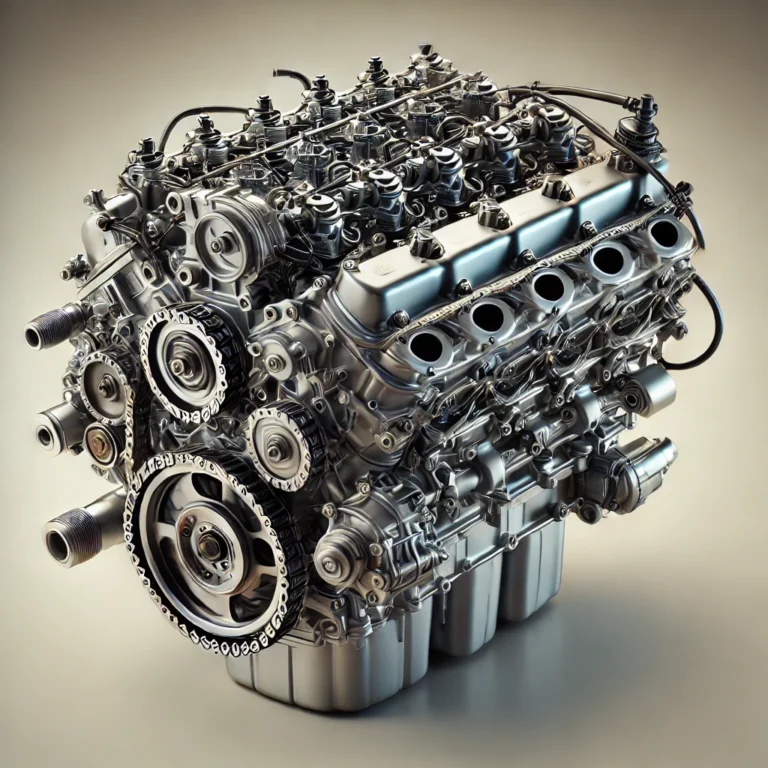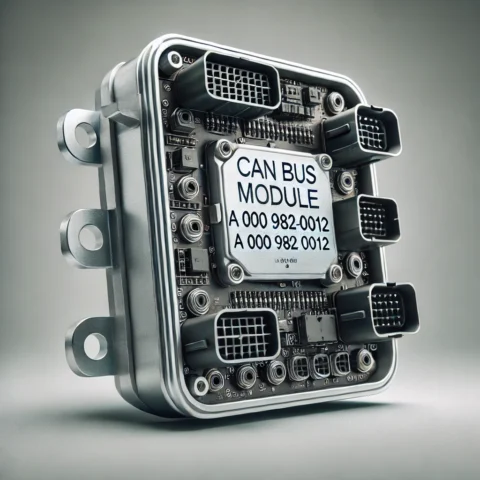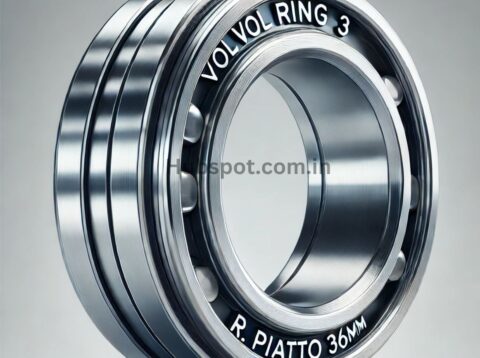The 2.4-liter Toyota 22RE engine has achieved iconic status in the automotive world for its durability, reliability, and versatility. Originally launched in the early 1980s, this engine quickly gained a reputation as one of Toyota’s most reliable powerplants, especially popular in off-road communities and beloved by truck and SUV enthusiasts. It powers a variety of Toyota models, including the Toyota Hilux and Toyota 4Runner, making it a sought-after option for both everyday drivers and hobbyists alike. Here, we provide an in-depth guide on the 2.4-liter Toyota 22RE engine, detailing its specifications, features, common issues, and why it remains so popular decades after its introduction: https..//fraserengineco.com/2-4-liter-toyota-22re-engines/.
1. Overview of the 2.4-Liter Toyota 22RE Engine
The Toyota 22RE engine was introduced in 1983 as an upgrade to the earlier 22R model. With the addition of electronic fuel injection (EFI), the 22RE represented a leap forward in both performance and fuel efficiency for Toyota’s truck and SUV lineup. Known for its simplicity and robust design, the 22RE was built to last and to endure harsh conditions, which is why it remains a favorite in the off-roading and DIY communities: https..//fraserengineco.com/2-4-liter-toyota-22re-engines/..
Key Specifications
- Engine Type: Inline-4
- Displacement: 2.4 liters (2366 cc)
- Bore x Stroke: 92 mm x 89 mm
- Compression Ratio: 9.4:1
- Fuel System: Electronic Fuel Injection (EFI)
- Horsepower: Approximately 105 hp at 4800 rpm
- Torque: Around 137 lb-ft at 2800 rpm
These specifications contribute to the engine’s reputation for providing solid power and reliability, particularly in applications where low-end torque is crucial, such as off-road driving or hauling heavy loads: https..//fraserengineco.com/2-4-liter-toyota-22re-engines/..
2. Benefits of the 2.4-Liter Toyota 22RE Engine
Reliability and Longevity
The 22RE engine is built with a cast iron block and aluminum cylinder head, which makes it highly resistant to wear and tear. With regular maintenance, the 22RE can easily surpass 300,000 miles, a feat few engines from its era can achieve. This reliability has made it a trusted choice for those who require a dependable engine for daily driving or challenging off-road terrains: https..//fraserengineco.com/2-4-liter-toyota-22re-engines/.
Ease of Maintenance and Repairs
One of the key advantages of the 22RE engine is its straightforward design. Unlike many modern engines, the 22RE is relatively easy to work on, which makes it a favorite among DIY mechanics and off-road enthusiasts. Parts are generally affordable and widely available, and its mechanical simplicity allows for quick repairs and modifications without the need for complex tools: https..//fraserengineco.com/2-4-liter-toyota-22re-engines/.
Fuel Efficiency and Performance
Despite being designed in the 1980s, the 2.4-liter 22RE engine offers competitive fuel efficiency. Its electronic fuel injection system improves fuel delivery, resulting in better fuel economy compared to the carbureted 22R engine. On average, the 22RE can achieve up to 22 miles per gallon (MPG) on the highway, a respectable figure for a 4-cylinder engine in a truck or SUV: https..//fraserengineco.com/2-4-liter-toyota-22re-engines/.
Aftermarket Support
The 22RE engine has a thriving aftermarket community, offering a wide range of performance upgrades and replacement parts. From high-performance camshafts to exhaust manifolds and fuel injectors, owners have numerous options to enhance the performance of their 22RE engine. This extensive aftermarket support makes the 22RE a favorite for customization and performance tuning; https..//fraserengineco.com/2-4-liter-toyota-22re-engines/.
3. Common Issues with the 2.4-Liter Toyota 22RE Engine
While the 22RE engine is known for its reliability, it’s not without its issues. Understanding the potential problems can help owners take preventative measures to keep their engines running smoothly.
Head Gasket Failure
One of the most common issues with the 22RE engine is head gasket failure. Over time, the head gasket can weaken, especially under high temperatures and heavy loads. Symptoms include coolant leaks, overheating, and white smoke from the exhaust. Replacing the head gasket is a common repair for high-mileage 22RE engines and is essential to prevent further damage: https..//fraserengineco.com/2-4-liter-toyota-22re-engines/.
Timing Chain Wear
The timing chain on the 22RE engine is prone to wear, particularly if not maintained properly. A worn timing chain can lead to engine misfires or even valve damage. Regular inspection and replacement of the timing chain and guides, ideally every 100,000 miles, can prevent major engine issues and prolong the life of the engine; https..//fraserengineco.com/2-4-liter-toyota-22re-engines/.
Oil Leaks
Oil leaks are a relatively minor but common issue in the 22RE. The leaks often occur around the valve cover gasket and oil pan gasket. Although these leaks usually don’t affect performance, addressing them promptly can prevent engine bay buildup and potential long-term issues.
4. Performance Upgrades for the 2.4-Liter Toyota 22RE Engine
For enthusiasts looking to enhance the performance of their 22RE engine, several modifications can provide a noticeable boost in power and responsiveness. Here are some popular options:
Upgraded Camshaft
Replacing the stock camshaft with a performance camshaft is a popular modification among 22RE enthusiasts. A performance camshaft can increase horsepower and torque, particularly at higher RPMs, making it ideal for off-road driving where additional power is beneficial; https..//fraserengineco.com/2-4-liter-toyota-22re-engines/.
Aftermarket Exhaust System
Installing an aftermarket exhaust system can improve the engine’s airflow, resulting in increased horsepower and torque. Many 22RE owners choose to add headers and a high-flow catalytic converter to maximize performance gains while maintaining emissions compliance.
Fuel Injector Upgrade
Upgrading to high-performance fuel injectors can enhance fuel delivery, leading to improved throttle response and potentially better fuel efficiency. While this upgrade may not significantly increase horsepower, it can make the engine feel more responsive and dynamic; https..//fraserengineco.com/2-4-liter-toyota-22re-engines/.
Cold Air Intake
Adding a cold air intake system allows the engine to take in cooler, denser air, which can increase power output. This modification is relatively easy to install and is a cost-effective way to improve the engine’s overall performance; https..//fraserengineco.com/2-4-liter-toyota-22re-engines/.
5. Why the 2.4-Liter Toyota 22RE Engine Remains Popular Today
The continued popularity of the Toyota 22RE engine can be attributed to its reliability, ease of maintenance, and customization options. Its ability to withstand harsh conditions, combined with a simple design that facilitates DIY repairs, makes it an appealing choice for those who value practicality and longevity.
Moreover, the 22RE’s compatibility with a range of Toyota vehicles, such as the Toyota Hilux and Toyota 4Runner, allows owners to enjoy a classic yet reliable engine across different platforms. This adaptability has cemented the 22RE’s status as an enduring favorite in the automotive world, especially among those who enjoy restoring and modifying older vehicles.
6. Conclusion: Is the 2.4-Liter Toyota 22RE Engine Right for You?
Whether you are looking to purchase a used vehicle with a 22RE engine or are considering a rebuild or performance project, the 2.4-liter Toyota 22RE engine offers a compelling combination of durability, reliability, and customization potential. With a rich history of dependable service and a dedicated community of enthusiasts, the 22RE remains one of the best 4-cylinder engines Toyota has ever produced. For those who appreciate classic engineering and robust performance, the 22RE engine is an excellent choice.



